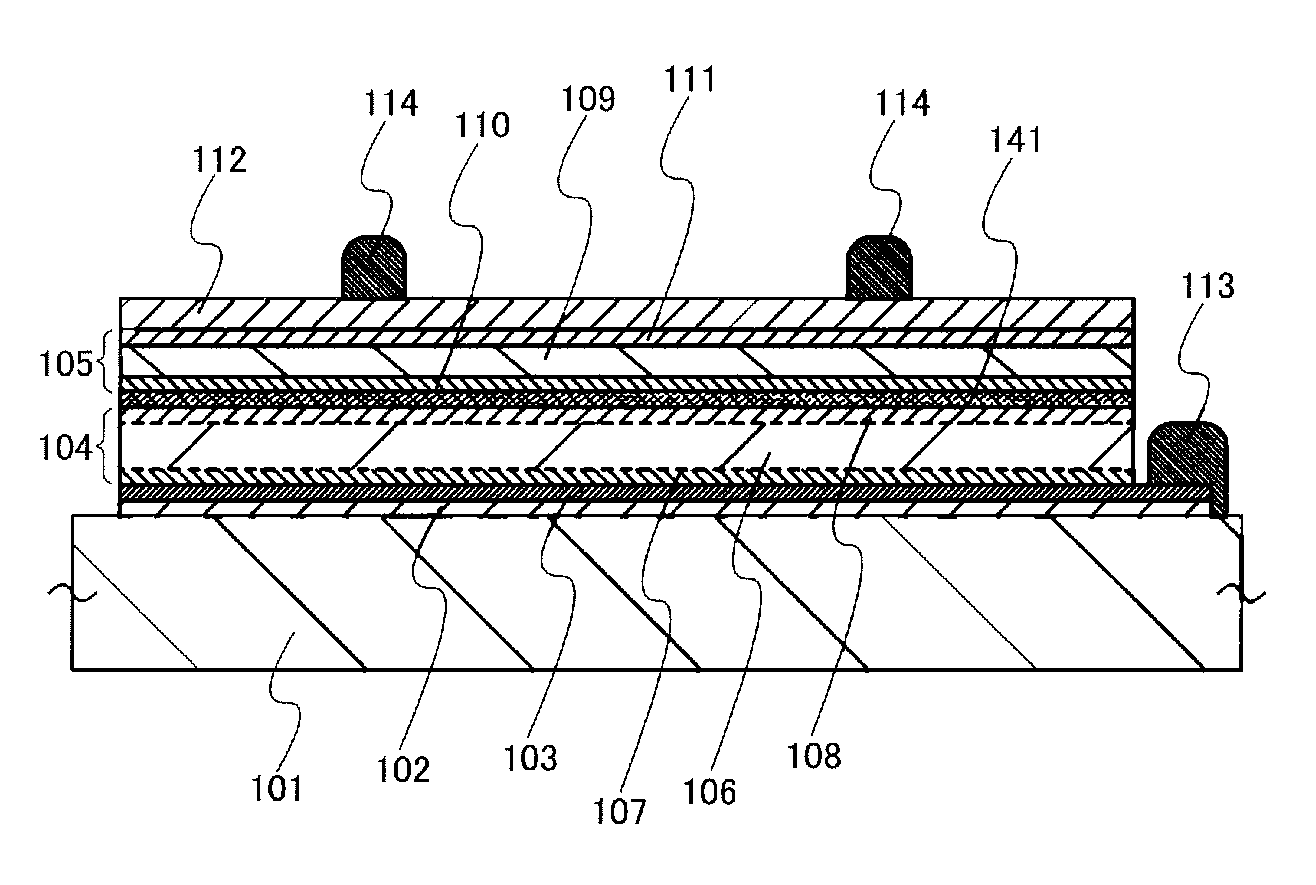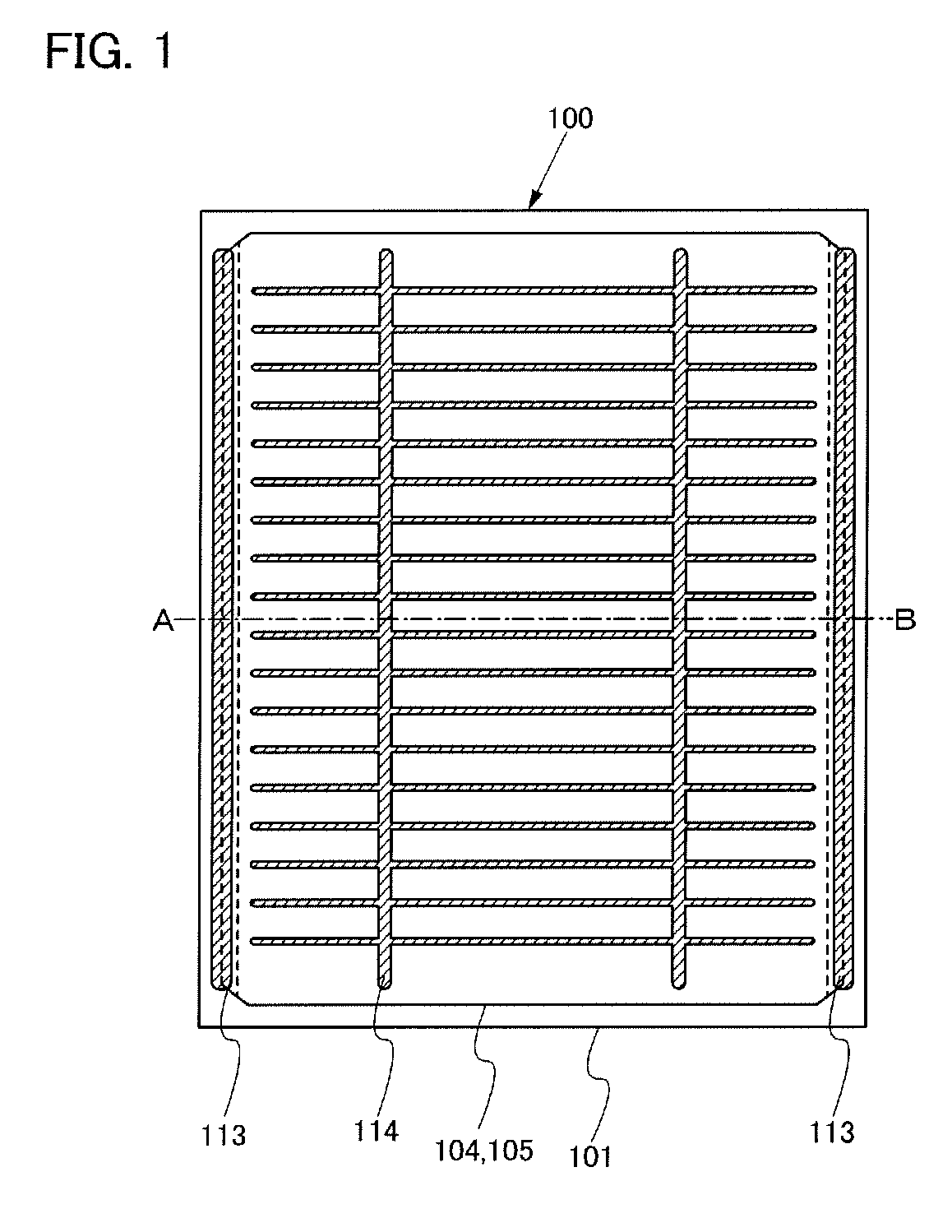Photoelectric conversion device and manufacturing method thereof
- Summary
- Abstract
- Description
- Claims
- Application Information
AI Technical Summary
Benefits of technology
Problems solved by technology
Method used
Image
Examples
embodiment modes
[0039]Embodiment modes of the present invention will be described with reference to the drawings. It is to be noted that the present invention is not limited to the following description, and it is easily understood by those skilled in the art that modes and details thereof can be modified in various ways without departing from the sprit and scope of the present invention. Therefore, the present invention should not be construed as being limited to the description of the following embodiment modes. In the structures of the present invention described below, the same portions are denoted by the same reference numerals through the drawings.
embodiment mode 1
[0040]FIG. 1 is a plan view of a photoelectric conversion device 100 of this embodiment mode. This photoelectric conversion device 100 includes a first unit cell 104 and a second unit cell 105 which are fixed over a supporting substrate 101. The first unit cell 104 and the second unit cell 105 include a semiconductor junction by which photoelectric conversion is performed.
[0041]The first unit cell 104 is provided with a first electrode on the supporting substrate 101 side, and the second unit cell 105 is provided with a second electrode on the surface side. The first electrode is connected to a first auxiliary electrode 113, and a second auxiliary electrode 114 is provided over the second electrode. The photoelectric conversion device 100 of this embodiment mode has a structure in which the first unit cell 104 and the second unit cell 105 are stacked over the supporting substrate 101 having an insulating surface; therefore, positive and negative electrodes are exposed on the same su...
embodiment mode 2
[0070]In this embodiment mode, an intermediate layer which has a different structure from the intermediate layer described in Embodiment Mode 1 will be described.
[0071]A composite material including a transition metal oxide and an organic compound can be used as the intermediate layer 141 in FIG. 2. In this specification, “composite” refers to not only a state in which two types of materials are simply mixed, but also a state in which electric charges are given and received between materials by the mixture of a plurality of materials.
[0072]Since the composite material including the transition metal oxide and the organic compound has a large carrier density, the composite material can be preferably used as a recombination center. In FIG. 5, an energy band diagram in the case where the composite material of the transition metal oxide and an organic compound is used as the intermediate layer 141 is illustrated. In the intermediate layer 141 described in this embodiment mode, electrons ...
PUM
 Login to View More
Login to View More Abstract
Description
Claims
Application Information
 Login to View More
Login to View More - R&D
- Intellectual Property
- Life Sciences
- Materials
- Tech Scout
- Unparalleled Data Quality
- Higher Quality Content
- 60% Fewer Hallucinations
Browse by: Latest US Patents, China's latest patents, Technical Efficacy Thesaurus, Application Domain, Technology Topic, Popular Technical Reports.
© 2025 PatSnap. All rights reserved.Legal|Privacy policy|Modern Slavery Act Transparency Statement|Sitemap|About US| Contact US: help@patsnap.com



